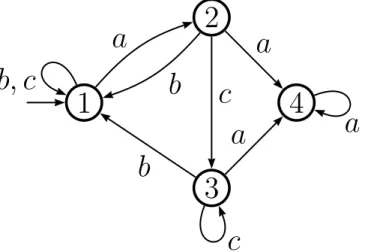babcaacb,ca 1324 Homework3
Volltext
Abbildung

ÄHNLICHE DOKUMENTE
To ensure that the complexity problem we study is not influenced by the lattice operations, we only consider lattices where there is a Turing-Machine that computes the join and the
Before looking at the problem of deciding inclusion of the languages accepted by two tree automata and its generalization to the weighted case, we will motivate our interest in
Before looking at the problem of deciding inclusion of the languages accepted by two tree automata and its generalization to the weighted case, we will motivate our interest in
For this purpose, standard reasoning tasks like deciding emptiness or complementing automata over finite or infinite words have been generalized to the weighted setting, and
Similarly, we prove that n-turn all-move self-regulating finite automata give rise to an infinite hierarchy of language families coinciding with the hierarchy resulting from (n
Gabriele R¨ oger (University of Basel) Theory of Computer Science March 8, 2021 5 /
(ii) The transition graphs of pushdown automata are in S-AutStr: 13 Given a pushdown automaton A with states Q, stack alphabet Γ, input al- phabet Σ and transition relation ∆ we
Next, we consider the problem of computing the length of a shortest reset word for a given automaton: we establish that this problem is complete for the class FP NP[log] of all